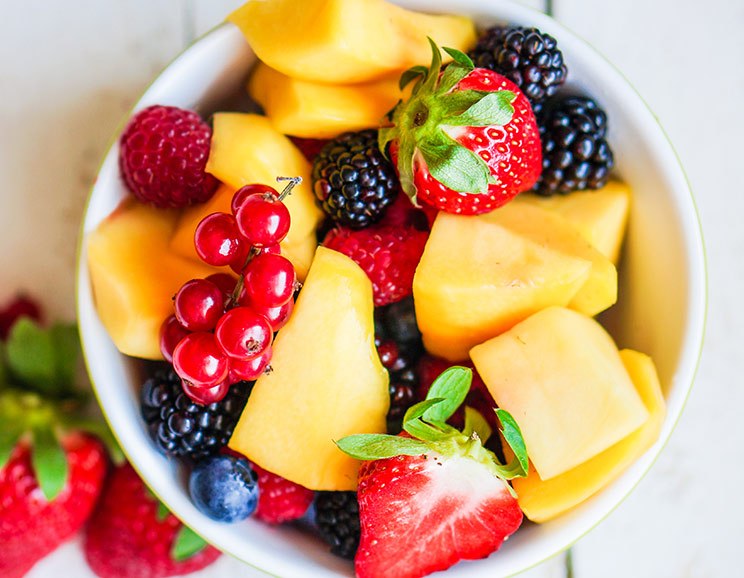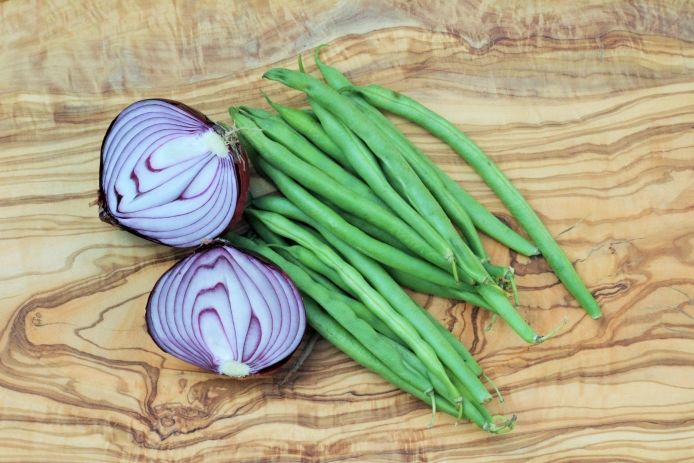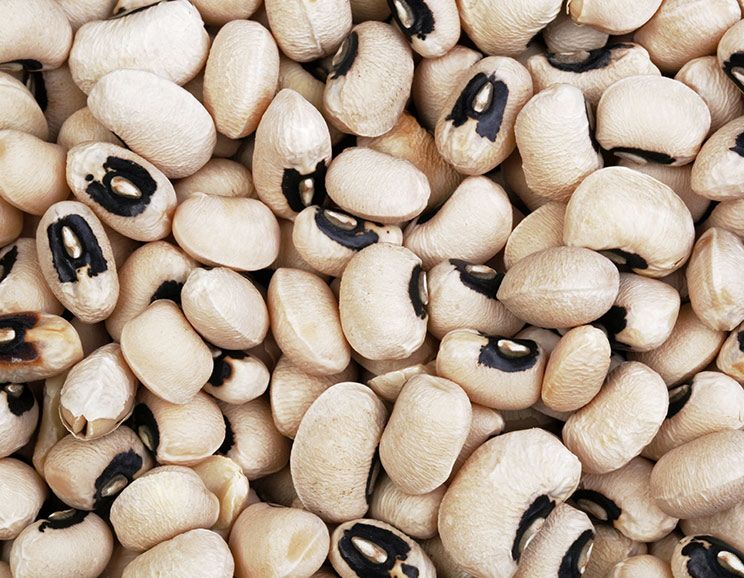Beans and other legumes are a big part of many people’s diets.
They’re cheap to buy, keep for a long time, and come highly recommended by government agencies and mainstream nutrition groups.
You won’t find them in most Paleo recipes, though. While there’s some disagreement about certain legumes and grains (like white rice), the general consensus is that most of these foods do more harm than good. Their nutritional value just doesn’t stack up to animal protein or vegetables and fruits.
(Read: What Are Legumes?)
A lot of people don’t realize it, but how these foods are prepared has a big impact on whether they’re harmful or healthy.
Most people today are eating beans and other legumes (like peas and lentils) that haven’t been processed to remove dangerous anti-nutrients.
But if you’re willing to change the way you prepare these foods, you can lessen some of the dangers.
A Host of Dangerous Anti-Nutrients
Because plants can’t pick up and run like animals can, they evolved different mechanisms to protect themselves and their seeds from predators (1). Some of these mechanisms – anti-nutrients – explain why legumes aren’t recommended by most Paleo experts.
Phytates are one of the most dangerous and common anti-nutrients found in legumes. These chemicals exist naturally in those foods, but they cause issues for us by binding themselves to calcium, zinc, iron, and other important vitamins and minerals (2). This process stops our bodies from absorbing those key nutrients, which can lead to mineral deficiencies and other serious problems like osteoporosis (3). [tweet_quote] Eating lectins all the time breaks down the integrity of the gut lining, leading to indigestion, inflammation, and other serious problems… [/tweet_quote]
Lectins are another anti-nutrient to keep in mind. They’re found in all kinds of foods, but they are particularly concentrated in legumes. Lectins protect plants by helping seeds pass through predators’ digestive tracts still intact, but they’re harmful to us because they pass through intestinal walls and into our bloodstream. Eating lectins all the time breaks down the integrity of the gut lining, leading to indigestion, inflammation, and other serious problems like leaky gut and autoimmune diseases (4, 5).
Unfortunately, modern food processing methods do little (if anything) to remove these harmful anti-nutrients before they make their way onto your pantry shelves.
But societies have eaten legumes for thousands of years without struggling with so many health issues.
What gives?
Traditional Food Preparation Techniques Remove Anti-Nutrients
Civilizations around the world haven’t always had reliable access to quality produce and animal protein. So they developed simple ways to minimize the harmful anti-nutrients found in legumes, making them healthier to eat and digest.
Here are some of their methods you could try today:
Soaking
One of the easiest ways to remove anti-nutrients from beans and other legumes is to simply soak them in water for several hours before cooking them.
A lot of the anti-nutrients are actually in the skin of these foods. Because they’re on the surface of the food and water-soluble, some of them dissolve when you soak them in water (6).
Just how many anti-nutrients soaking can remove depends on the type of legume you choose. One study compared soaking white beans, broad beans, lentils, chickpeas, and soybeans for 12 hours at 78 degrees Fahrenheit. Researchers found this reduced phytates by between eight and 20 percent (7). Another study published in the Journal of Food Science focused on brown beans and tracked the effects of soaking them at different temperatures. Longer soaking times and the warmest water caused the greatest decrease in phytates (8). [tweet_quote] The soaking process itself is pretty straightforward: 1) water, 2) heat, and 3) time. [/tweet_quote]
Soaking legumes can also help remove lectins. One study found that soaking pigeon peas for six to 18 hours decreased their lectin content by between 38 and 50 percent (9). And Michigan State University researchers found that soaking red kidney beans for 12 hours decreased lectin by almost 49 percent (10).
The soaking process itself is pretty straightforward. It isn’t an exact science, but the common elements (no matter which types of beans or legumes you choose) are: 1) water, 2) heat, and 3) time.
Start out by warming water in a kettle. Using very warm water – but not too warm – has shown be the most effective at degrading legume anti-nutrients. 140 degrees Fahrenheit is just about right. Once you have hot water ready to go, pour it over your beans and leave them in a warm place.
Your beans will absorb some of the water as it cools, so feel free to add more warm water if the levels drop too much. Let your beans soak for a long enough amount of time – between 12 and 18 hours is a good goal – to strip away as many anti-nutrients as you can.
When you finish soaking the beans, just rinse them off and cook them like you normally would. Or, you can try another preparation method discussed below.
It’s important to point out here that you don’t have to choose just one method of preparation. It’s actually a great idea to combine multiple methods because it removes even more anti-nutrients (11). It takes more time and effort, but it makes these foods much less harmful to your body should you decide to eat them.
Sprouting
Sprouting – when little sprouts start emerging from the legume seeds – is the next logical step after soaking because that’s exactly what happens if you keep watering them.
Sprouting takes longer than soaking, but it makes the nutrients in legumes more available to your body when you eat them (12). This is because anti-nutrients like phytate and lectin break down due to changes within the seeds.
Sprouting has the biggest impact on phytates. Just how much of an impact depends on the type of legume. One study found that sprouting peanuts decreased their phytates by only 25 percent, but decreased the phytate content in chickpeas and lentils by around 50 percent (13).
It takes time to reap these benefits, usually four or five days. But sprouting causes a significant reduction in phytates. It becomes even more powerful if you combine it with soaking or fermentation.
How do you cause your legumes to sprout?
It begins like soaking. After you rinse off any soil and dirt, let the seeds sit for between two and 12 hours in cool water. Then, rinse the seeds and drain as much water as you can. Then put the seeds in a sprouting container (called a “sprouter”). You can find a decent sprouter online for as little as 10 dollars.
Put the seeds in the sprouter, then leave it at room temperature but out of direct sunlight. Rinse and drain the seeds several (two to four) more times once every eight to 12 hours until the sprouts come out of the seeds. Then, continue to prepare the sprouted seeds or cook them like you normally would.
Just like soaking, sprouting is more of an art and a science. Ben Greenfield put together a handy reference chart to help you figure out how long it should take to sprout specific types of legumes here.
Fermenting
Fermentation happens when bacteria or yeasts start digesting the carbohydrates in food. Usually, foods ferment by accident. That’s when they’ve sat too long without being eaten and we consider them “spoiled.”
But we also ferment foods on purpose all the time. That’s the only way to make a lot of foods and drinks – everything from yogurts and cheeses to coffees and wines. [tweet_quote] One study found that fermenting reduced phytates in kidney beans by 85%, soybeans by 77%, and mung beans by 69%. [/tweet_quote]
With legumes, fermentation is useful because it significantly degrades both phytate and lectin content. One study found that fermenting reduced phytates in kidney beans by 85 percent, soybeans by 77 percent, and mung beans by 69 percent (14).
How do you ferment legumes?
It’s easiest to ferment them after you’ve already cooked them. So go ahead and do that, as well as any other steps like soaking and sprouting, first. Then it’s time to add a bacteria culture to kick off the fermentation process. You can use any of these:
- Brine from lacto-fermented vegetables
- Kombucha
- Powdered starter culture
- Water kefir
- Whey from cultured yogurt or kefir
Use about a tablespoon of culture for every cup of beans. If you decide to use a powdered culture, just follow the directions and use the recommended amount. After you add the culture, it’s time to break the skins of the legumes so the culture can reach the starches. You can mash your legumes completely or just apply enough pressure to break the skin. Feel free to throw in some herbs and spices for flavor.
(Read: 5 Paleo Super Herbs)
Next, put everything in a sealed container and let them culture in a warm place for a few days. Open the container lid every once in a while to release the gases that build up during the process. You can turn fermented legumes into cold salads or use them as dips.
Boiling
Boiling legumes when you cook them is one preparation method you’re probably already using.
Exposing legumes to high heat can help eliminate some of their anti-nutrients. One study found that boiling peas for 80 minutes reduced their lectin content by almost 80 percent (15).
While high heat is effective against lectins and other anti-nutrients, phytates are heat-resistant. Boiling doesn’t have much of an effect on of them. However, boiling your grains and legumes after you’ve used one (or more) other traditional preparation methods can be a good way to knock out a lot of phytates and lectins, making whatever you eat more healthy and digestible.
Is It Worth It?
We just went over different ways to prepare beans and other legumes to make them less harmful. If all of that sounded like a lot of trouble, you might be wondering if it’s even worth the time!
Yes, preparing these foods properly takes some effort and patience. But there’s no reason why you have to eat legumes. Nutritionally, you won’t find anything in them that you can’t find in the pillars of a healthy Paleo diet: vegetables, animal products, and fruits. Most of those foods are more nutritionally dense than beans and other legumes anyway.
The only reason to consider eating legumes is if you like the taste. If you decide to go that route, make it an occasional indulgence instead of a regular thing. Remember: even traditional preparation methods don’t get rid of all the anti-nutrients, and you could be getting more nutrients by eating other foods.
A Personal Decision
The best move for your health is to stay away from all legumes and their harmful anti-nutrients. You avoid the downsides, and the foods you do eat – organic animal products and produce – offer more nutritional bang for your buck.
Just like cheat days and deciding whether or not to drink alcohol, it’s ultimately a personal decision. If you do decide to eat beans or other legumes because you like their taste, limit yourself to special occasions. And make sure to spend time preparing them properly to avoid as many anti-nutrients as you can.
Do you ever eat beans or other legumes like lentils, peas, or peanuts? If so, what’s your favorite way to prepare them and remove the anti-nutrients? Leave a comment below and share your experience!


 7 Surprising Facts About Fruit
7 Surprising Facts About Fruit



Show Comments